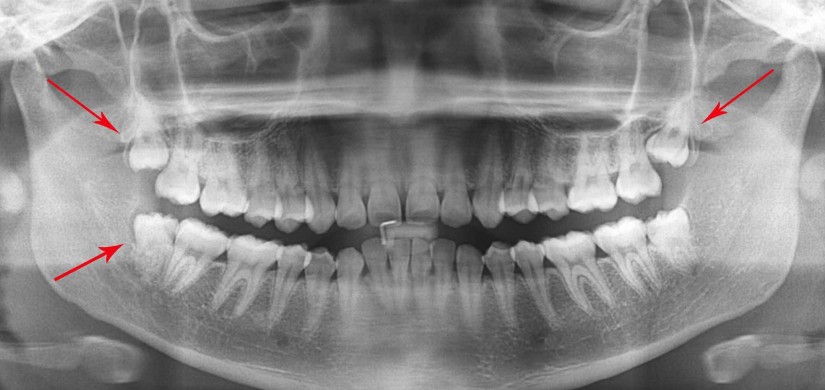
Wisdom teeth (a.k.a 3rd Molars) are the last teeth to develop. Their removal is recommended when they fail to properly erupt into the mouth. In some situations, wisdom teeth do not need to be removed, however most of the time this is not the case. Both erupted and unerupted (impacted) wisdom teeth can cause many problems. These include pain, swelling, infection bone loss around adjacent teeth leading to chronic inflammation and irreparable harm, development of tumors and cysts, and crowding of remaining teeth potentially disrupting orthodontic treatment.
When should wisdom teeth be extracted?
Early removal is recommended, typically between the ages of 16 and 21 years old. However, everyone is unique and wisdom teeth develop at different times and rates. In general, extraction of wisdom teeth should be completed prior to the full development of the roots.
This allows for Dr. Shaver and Hammen to minimize risks and complications to adjacent structures including the Inferior Alveolar Nerve, Lingual Nerve and the Maxillary Sinuses.
Recovery Time
Typically, recovery from wisdom tooth removal is approximately 3-4 days, however depending on the situation, it could be shorter or as long as 1 week. It’s important to follow our post-operative instruction to help minimize your recovery time.
Post-Operative Instructions
At the time of your discharge, you and your escort will be given detailed instructions for care after your surgery. In addition to your instructions, you will be given a prescription for pain control and possibly an antibiotic. You will also be informed if sutures were placed to aid in the healing process. Generally speaking, we will use dissolvable sutures that typically last 3 -4 days.
Dry Socket
Dry socket or alveolar osteitis results from the loss of the blood clot that forms at the extraction site. This clot acts as a band aid for the extraction socket. Premature loss of the clot, results in discomfort 3 to 5 days following the extraction.
- Symptoms:
– Pain that radiates to your ears
– Halitosis (bad breath)
– Bad taste - Risk factors:
– Smoking
– Use of birth control pills
– Poor oral hygiene.
– Use of straws after surgery
– History of previous dry socket - Treatment:
– Typically, a dry socket will last 7-10 days. It can be treated with over – the – counter pain relievers, narcotic medications or placement of a dissolvable dressing in the extraction site. If you feel as if you are experiencing a dry socket following surgery, feel free to contact our office for evaluation.
